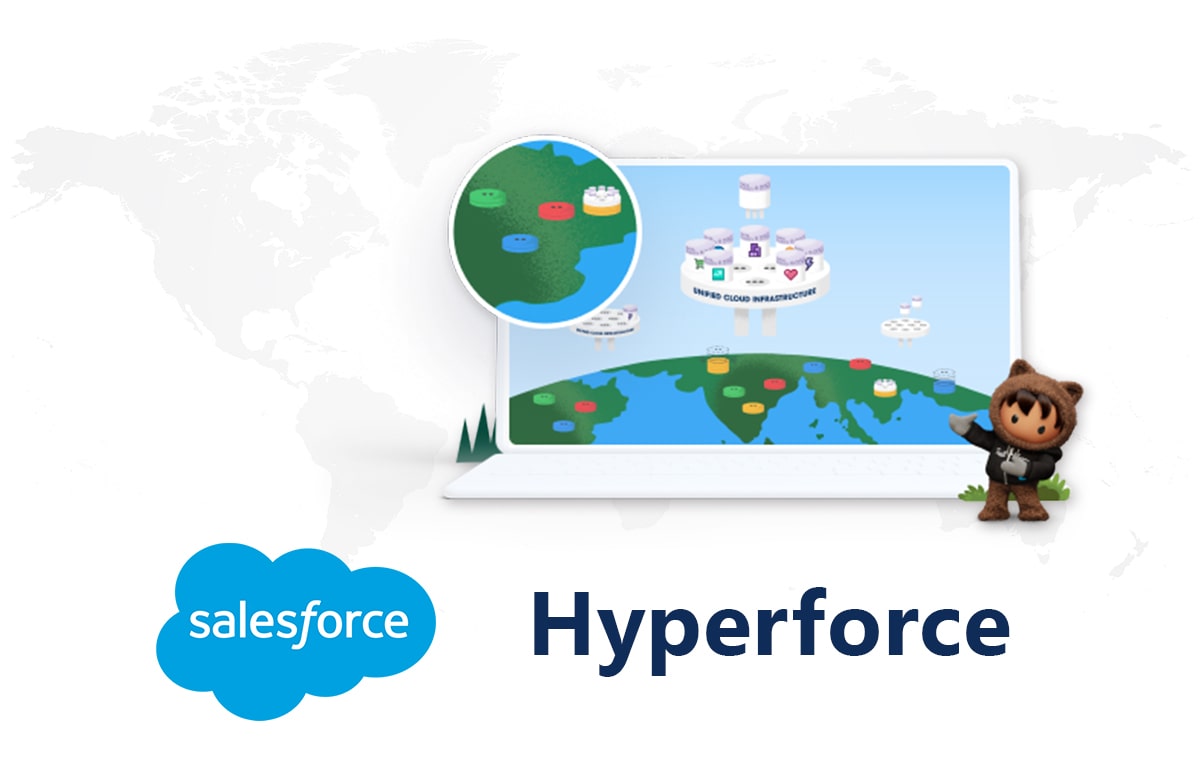The year 2020 has definitely witnessed a lot of technological advancements in the digital space along with significant changes in the way we work. It was also the year when Salesforce focused a lot on several initiatives for supporting growth even during the pandemic. With the rapid evolution in cloud computing, Salesforce has moved some of it’s workload to public clouds like Google Cloud, Amazon AWS, Microsoft Azure.
Besides the acquisition of Slack, the most significant announcement that Salesforce has made in 2020 is the launch of the new capability – Hyperforce. Now, Salesforce is widely known for hosting all of the data in its own cloud since it’s inception in 1999. With Hyperforce, Salesforce has made significant changes to its platform architecture hence enabling its customers to deploy their Salesforce apps and services on all major cloud platforms like Azure, AWS, Google, and Alibaba. In other words, customers can now choose where their data is hosted and enjoy the benefits of the scalability and flexibility of these public clouds! The Hyperforce capability is currently live in India and Germany but will soon expand to include almost all of the major countries by 2021.
Salesforce announced that Hyperforce is a “reimagination” of its platform architecture and is designed to securely deliver Salesforce Customer 360, including the marketing cloud, sales cloud, commerce cloud, service cloud and other solutions to work seamlessly with the major public cloud providers. Hyperforce is designed to deliver an even better platform in terms of scalability to support the growth and success of Salesforce’s customer base across the globe.

The main aim of Hyperforce is to deliver the following capabilities:
1. Companies get to choose the desired location for data storage. Data can be stored locally which will help organizations which need to comply with region or industry specific regulations.
2. Massive scalability and elasticity are probably the major advantages of the public clouds. With the elasticity of the public clouds, customers can easily access compute capacity in order to be more efficient and flexible.
Commercial elasticity matters a lot to the C-suite executives these days. They will have the option to pay less when the business slows down.
It will be a significant plus in terms of technical development as well because the time required for Salesforce implementations will be reduced from months to days!
3. Security is probably the major concern that most Salesforce users have in mind while storing their sensitive customer information. With Hyperforce, customers can rest assured that their sensitive information is securely stored. Customers will have the option to save their data in some of the most trusted public clouds in the world and transfer their privacy concern to these providers.
4. With Hyperforce, Salesforce offers full backward compatibility. Customers will get to run their existing Salesforce apps, integrations and other customizations as usual, regardless of the cloud they choose, and their systems won’t really be affected by the data storage location. For all the technical people out there, this is really a remarkable advantage as the apps will function without requiring any modification and you will be able to benefit a lot with this capability.
Salesforce’s launch of Hyperforce is definitely a significant technological shift in the CRM ecosystem. Salesforce will be rolling out Hyperforce in all the major countries in the year 2021 and is hoping for witnessing a paradigm shift in the customer satisfaction scores. We have yet to understand the full capabilities of Hyperforce, but one thing is definitely certain – the move to Hyperforce will significantly reduce the infrastructure hosting costs for Salesforce and its customers in the long run which definitely sounds like a win-win situation!
Leave A Comment